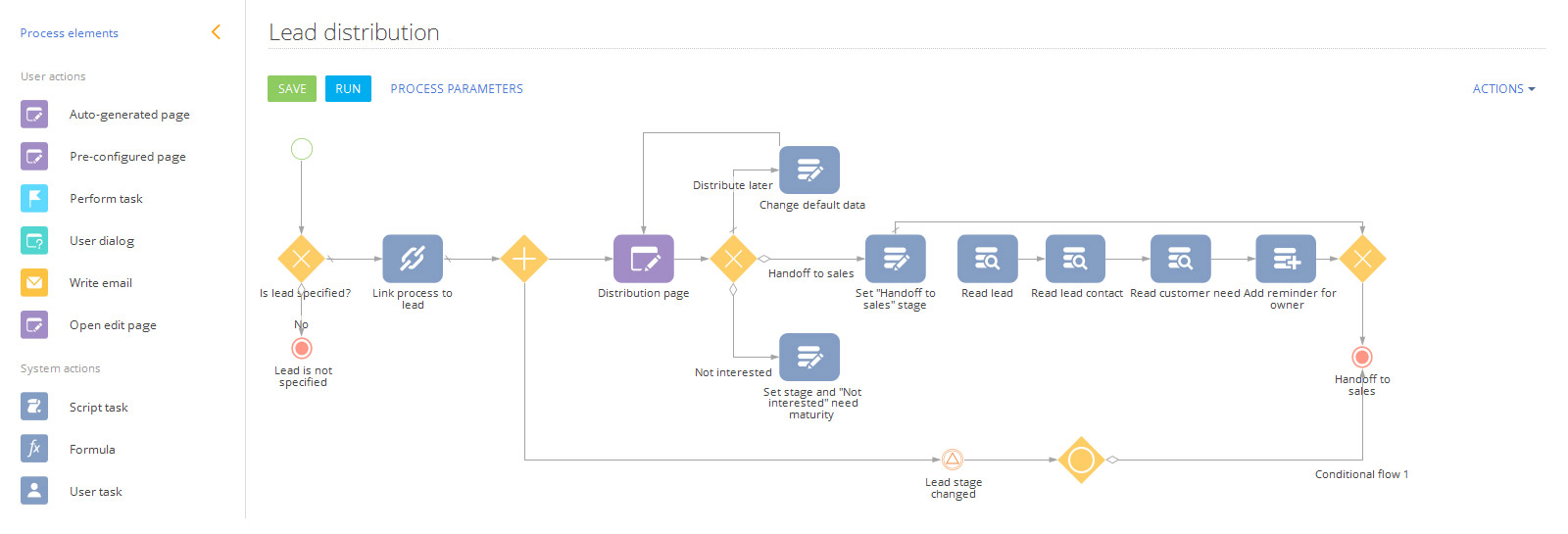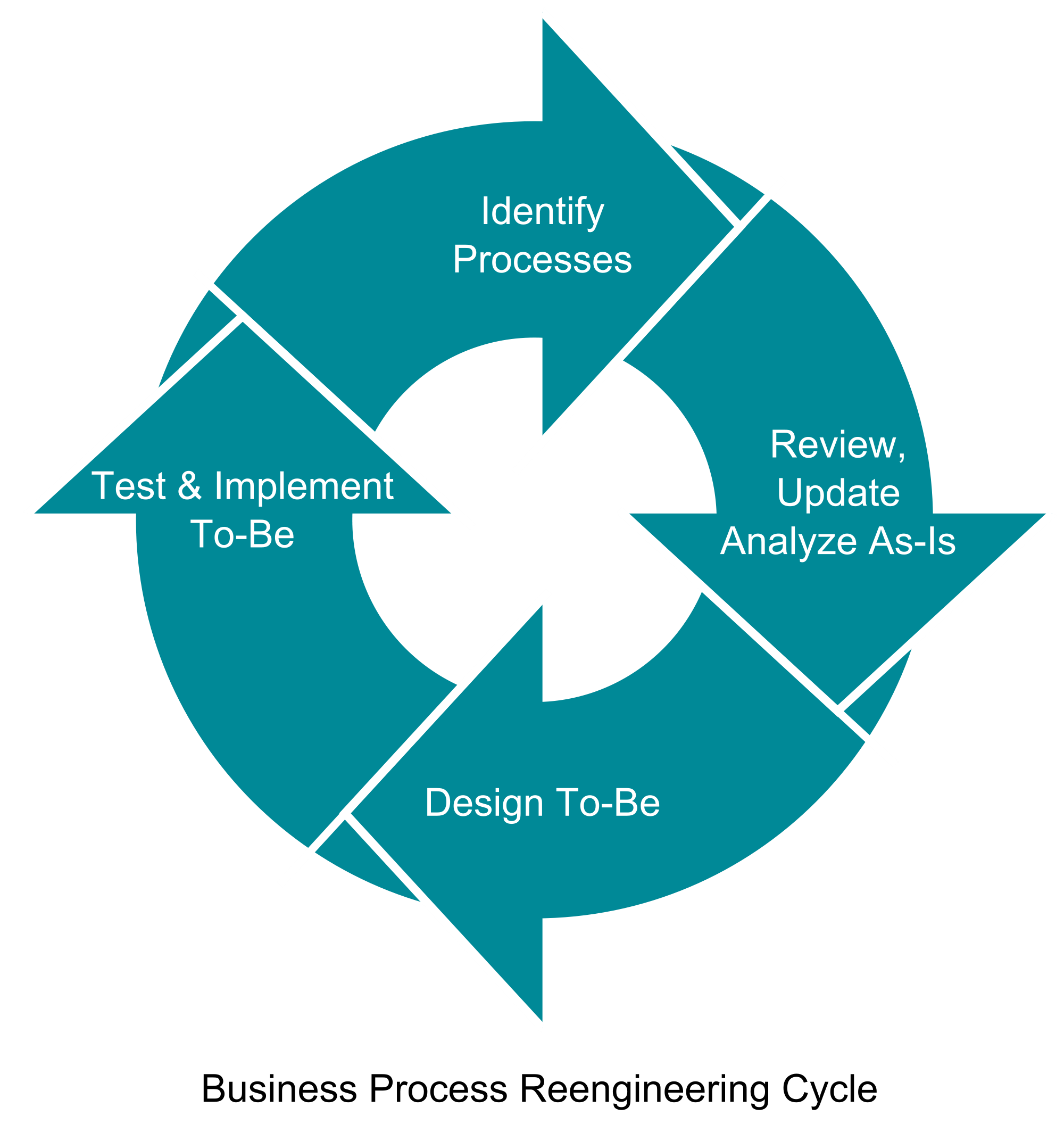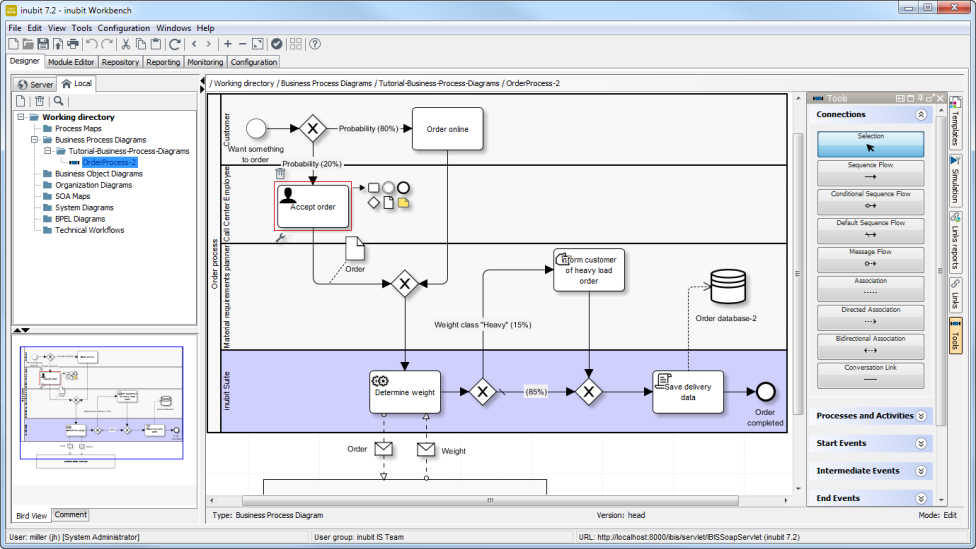
In order to get a finished product as the outcome, every business needs to build –up a chain of the consecutive operations. These operations form a production cycle or a business process. In other words, business process is a representation of definite tasks execution, which can be measured.
Planning of vacation schedules, finalization of contract terms and conditions, finance operations are the examples of business processes. A company or an enterprise can have one key business process or a system of interlinked minor business processes targeting at a scheduled result.
Establishment of business processes enables to implement strict control over all the operations, to enhance manageability and to make the execution of each operation faster.
What needs to be done to run a company or an enterprise much more successfully is to roll out a BMP – business process management system. These systems allow not only to set-up the initial business process model but to constantly improve and renovate it.
If we try to present business process review cycle graphically, we will get some kind of the following image:

Its ongoing improvement contributing to operational excellence enhancement.
Business process management system is realized through various features of BMP software, which automate processes and simplify execution of operations. It is especially critical for companies with complicated business process model.
Special programs are normally developed to fix definite number of steps. The latest BPM tools allow entering process changes by the users themselves without any additional help from IT specialists needed.
A standard BPM program comprises a predefined set of elements, among which are:
- projecting,
- execution,
- monitoring.
Under projecting a detailed scheme of business process is being developed. Execution is carried out through the so-called BPM engine, which is responsible for process launch, tracking changes and fulfillment of defined tasks. Monitoring controls business-process through visualizations of statistics and graphics. BPM-systems generate reports customized for different parameters allowing to estimate effectiveness of the process.
Nowadays, BPM software market is well-developed and can offer customers a good variety of tools. BPM’online is one of the examples deserving your attention.
Key functionalities of BPM
Modern BPM systems present vast opportunities for automation of all business processes at the enterprise. Details descriptions can be found here https://www.bpmonline.com/BPM-software. However, the main functions of business management systems software will be briefly observed below.
Repository of business processes in BPM
Such repositories comprise all process descriptions with the ability of sharing between all stakeholders.
This is how business process repository may look in BMP:

The structure of business model repository can be seen on the left side while the contents of the relevant component is reflected on the right. Each business model is presented as the diagram or a flow-chart. And all the users who are granted with the appropriate access to the repository can make changes to the flowcharts or model their own processes wherever they need in the structure of the repository.
Document flow
Document flow in BPM is realized though electronic document management system (EDMS) based on business process.
Normally EDMS allows to:
- create electronic documents;
- register them;
- organize a simple flow of documents;
- store them.
The processing of documents, which is built into the system represents logic sequence of document status changes. It means that a document status is the attribute to track the current stage of its processing. Thus, document processing is automated through document status change. This process is supposed to result in the completed document, which passes through all the stages of processing (registration, review, delivery etc.) that can easily be found in the system.
BPM allows to automate document flow within other business processes. For example, processing of a contract is carried-out as the constituent part of goods supply to a customer. Here, the final outcome is not the processed contract but a batch of goods supplied to a purchaser in time.
Customer relationship management (CRM)
In essence, CRM is a convenient client database comprising history of relationships between company and its customers. Such systems allow to automate process of goods or services sale starting from receipt of a requisition and ending up with, for example, shipment of goods.
BPMs enable to use CRM functionality broader. It is not limited only to sales but extended up to delivery of goods and receipt of payment. This joint process includes collaboration with other subdivisions of the company – logistics, warehousing, and finance operations. BPM helps to consider all critical elements of business process and their interdependence on each other.
BPM systems could provide many advantages while planning and realization of business-processes. They make execution of working processes faster, enhance their quality and arrange management through the indicators of performance monitoring. Eventually, BPM is equipped with all the tools for quick and easy analysis of business process management system and for any improvements and changes to this system if necessary. All these aspects put BPMs in great demand among big companies all over the world.
If you have any questions, visit bpm’online – namely https://community.bpmonline.com/ – to see more information and to comprehend how popular BPM in modern business world is.
Related Posts:
- Everything you wanted to know about BPM system
- BPM software solutions
- BPM as a service
- Enhancing enterprise intelligence with BPM 360
- CRM Market and bpm’online in Australia







